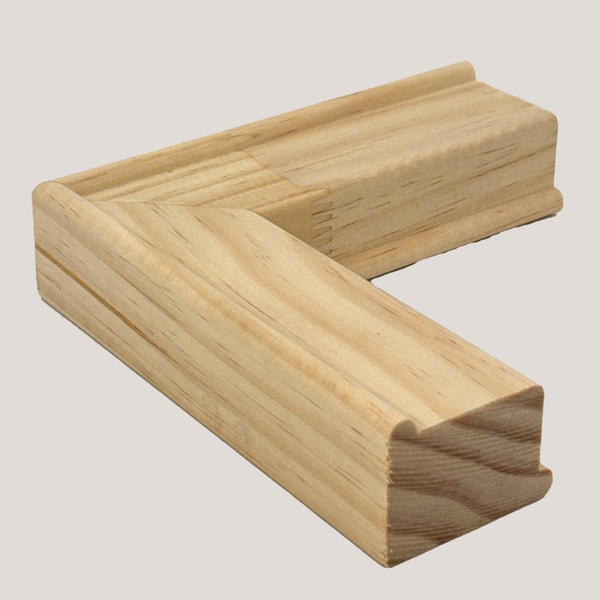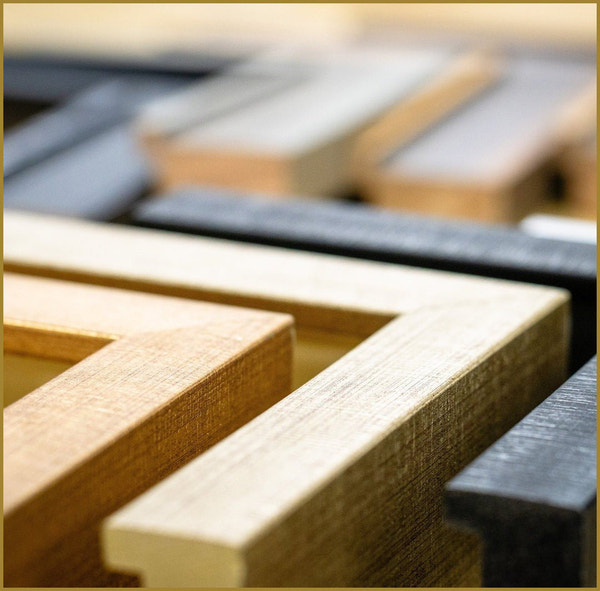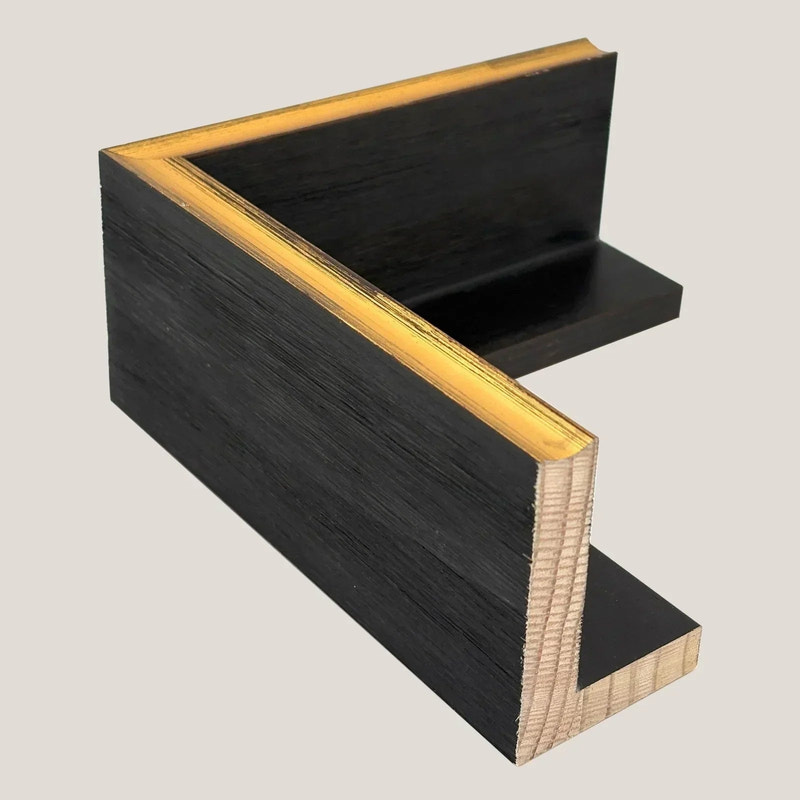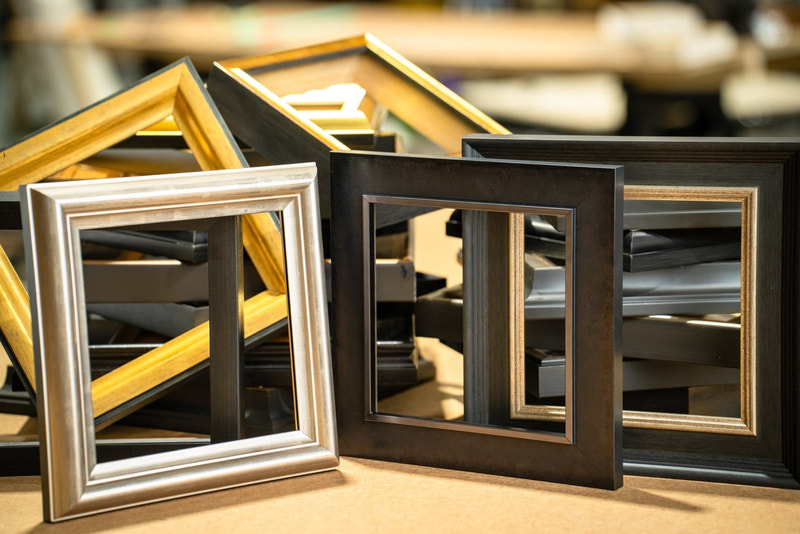1.5 Inch Deep Floater Frames for Canvases: Introduction
1.5 inch deep floater frames look great. When choosing a deep canvas floater frame, the depth of your canvas plays a big role. It ensures the artwork fits and looks polished. For most artists, 1.375 inch (1 3/8") and 1.5 inch (1 1/2 inch) deep canvases are the most versatile options. These sizes are industry standards and offer great flexibility for framing.
At Articient, you’ll find over 40 1.5 Inch Deep floater frame options designed for canvases and panels at or under 1.5 inch deep. These frames come in many styles, materials, and finishes, giving artists and buyers plenty of choices. In comparison, canvases thicker than 1.75 inch have more limited framing options. Articient offers a few frames for these extra-deep canvases also.
Sticking to 1.375 inch or 1.5 inch depths gives artists access to more frame styles and ensures a polished look. This guide will explain why these sizes are the best choice and how they help maximize framing and sales potential.
The Sweet Spot: 1.375 inch and 1.5 inch Deep Canvases
When it comes to framing, 1.375 inch and 1.5 inch canvases hit the sweet spot with 1.5" Deep Floater Frames. These sizes offer the best balance of flexibility, affordability, and ease of use with floater frames. While thinner canvases can be adapted using spacers, this adds to the overall cost. Any savings from purchasing thinner canvases often disappear when you factor in the extra expense for spacers.
Thinner canvases often bow inward when used with floater frames, creating a less professional look. To avoid these issues, it’s smart to stick with 1.375 inch or 1.5 inch deep canvases or panels. These sizes provide the broadest range of floater frame options, making installation simpler, easier and keeping costs competitive.
Even with these advantages, Articient also offers floater frames for thinner canvases that don’t require spacers, though options are more limited.
The Flexibility of 1.375 inch Canvases in 1.5 inch or 1.75 inch Floater Frames
For artists using 1.375 inch (1 3/8 inch) canvases, framing is incredibly simple and flexible. These canvases fit perfectly into both 1.5 inch and 1.75 inch floater frames without needing any adjustments. The height of the canvas sits comfortably within the ideal range of 3/8 inch recessed to flush with the frame face, ensuring a clean and polished look.
Using a 1.375 inch canvas with a 1.5 inch floater frame keeps the artwork’s presentation sleek while avoiding the need for an additional spacer. Similarly, a 1.75 inch frame provides just a bit more depth while still accommodating the canvas without issue. This flexibility makes 1.375 inch and 1.5 inch canvases a practical choice for artists who want to maximize framing options and streamline their process.
Articient’s floater frames are specifically designed with this flexibility in mind. By choosing a 1.375 inch canvas, you enjoy seamless compatibility with a wide range of frames and save time and money by eliminating extra steps. This ease of use makes 1.375 inch and 1/5 inch canvases one of the most reliable choices for artists and buyers alike.
What is a Spacer?
A spacer is a simple solution for adapting thinner canvases to fit deeper floater frames. It acts as a “secondary frame” that sits between the canvas stretcher bars or panel and the floater frame. It adjusts the canvas height to sit between 3/8 inch recessed and flush with the frame face. This ensures the floating effect that gives floater frames their signature look.
Articient makes custom spacers for canvases that need a height adjustment. When ordering, you can select your canvas depth under the “spacer dropdown” option. The spacer frame is built 1/4 inch smaller than the artwork to stay hidden, preserving the clean, modern look of the floater frame.
While spacers are a great tool, they do add a small cost to the framing job. Using standard canvas depths like 1.375 inch or 1.5 inch eliminates the need for spacers entirely, saving time and money. For thinner canvases, however, spacers remain an easy and reliable solution to ensure the artwork looks its best in any floater frame.

Challenges with Thicker Canvases (1.75 inch and Above) with Deep Canvas Floater Frames
Using a canvas deeper than 1.75 inch creates challenges in framing due to fewer options and higher costs. While these thicker canvases may give the artwork more presence, they greatly reduce framing options. Most deep canvas floater frames are designed for standard depths like 1.375 inch and 1.5 inch. Canvases over 1.75 inch have far fewer options, making it harder to find the right frame.
Frames for extra-deep canvases are often specialty items and are more expensive due to their rarity. Additionally, the limited designs may not match buyers’ preferences, which can make it harder to sell the artwork. Buyers typically prefer framed pieces that are ready to hang and fit seamlessly with their décor.
Despite these challenges, Articient offers a few floater frames for canvases deeper than 1.75 inch. See "Isa", a 2 inch deep floater frame (pictured here). However, the selection is limited compared to the extensive range available for standard depths. Sticking with 1.375 inch or 1.5 inch canvases remains the best choice for artists who want the widest variety of styles, competitive pricing, and the greatest chance of appealing to buyers.

The Sales Impact of Choosing Thick Canvases
When deciding on canvas depth, it’s important to consider how it affects sales. Many artists believe thicker canvases, like those over 1.75 inch, make their work stand out and negate the need for framing. While this might seem true in a studio, it often creates issues for potential buyers.
Clients typically want framed artwork that looks polished and ready to hang. Thick canvases limit framing options, making it hard for buyers to find frames that match their taste. This can discourage sales, especially for buyers seeking a cohesive look for their space. The few frames available for thicker canvases often cost more, adding to the challenges.
Using 1.375 inch or 1.5 inch canvases solves these problems. These standard depths offer a broad range of affordable floater frames in many styles. Buyers have more options, making it easier to find a deep canvas floater frame that complements both the artwork and their décor. Offering framed pieces or frames as an option can boost the appeal of your work and improve sales potential.
Cost Considerations
Choosing the right canvas depth not only affects framing options but also impacts costs. Standard depths like 1.375 inch and 1.5 inch are the most cost-effective choices for artists. These sizes fit the widest range of floater frames, allowing you to choose competitively priced options without additional tools or adjustments.
Thinner canvases may seem budget-friendly at first, but the cost of spacers often offsets any savings. Additionally, thinner canvases can bow inward, which may require extra effort to correct when framing. For thicker canvases over 1.75 inch costs can rise significantly due to the limited availability of frames.
By sticking to 1.375 inch or 1.5 inch canvases, you avoid these added expenses. These sizes ensure compatibility with a wide range of frames, competitive pricing, and a professional finish without extra hassle.
How Close to Flush Should the Canvas Be in the Frame?The canvas should sit between 3/8 inch recessed and flush with the frame face for a polished, professional look. This height range ensures the canvas stays secure and maintains the signature floating effect of floater frames.
For 1.375 inch canvases, this range works perfectly with both 1.5 inch and 1.75 inch frames. A flush canvas creates a seamless appearance, while a slight recess adds depth for a more dynamic effect. Adding a spacer can adjust thinner canvases to the proper height, ensuring they look their best.
Conclusion
Choosing the right canvas depth ensures framing success. Standard depths like 1.375 inch and 1.5 inch provide unmatched flexibility, affordability, and ease of use. While thinner canvases can work with spacers and thicker canvases have limited options, sticking to standard depths offers the most benefits. These sizes maximize framing choices, reduce costs, and improve buyer appeal.
FAQ Section
-
What is a floater frame, and why is it popular for 1.375 inch and 1.5 inch canvases?
A floater frame creates the illusion that the artwork is "floating" inside the frame. It’s popular for 1.375 inch and 1.5 inch canvases because these depths fit most floater frames perfectly without requiring adjustments like spacers. -
Can I use a floater frame for a canvas thinner than 1.375 inch ?
Yes, you can! Thinner canvases can be adapted using spacers to raise them to the correct height in the frame. However, this adds extra cost, and thinner canvases may bow, which can affect the appearance. -
Does Articient offer frames for extra-deep canvases over 1.75 inch ?
Yes, Articient offers a few floater frame options for canvases deeper than 1.75 inch . However, the selection is limited compared to the many options available for standard depths like 1.375 inch and 1.5 inch. -
What is a spacer, and how does it work?
A spacer is a “secondary frame” that fits between the canvas stretcher bars or panel and the floater frame. It raises the canvas to sit between 3/8 inch recessed and flush with the frame face. Articient offers custom spacers that are 1/4 inch smaller than the canvas, ensuring they stay hidden. -
Why should I stick to 1.375 inch or 1.5 inch canvas depths?
These sizes offer the broadest selection of frames, the easiest installation, and the most competitive pricing. They also eliminate the need for spacers and avoid issues like bowing, making them the best choice for both artists and buyers.
Final Thoughts
Choosing the right canvas depth is about more than just personal preference—it directly impacts framing options, costs, and buyer appeal. Standard depths like 1.375 inch and 1.5 inch are the most practical choices for artists. They provide the widest selection of floater frames, eliminate the need for spacers, and ensure a polished, professional look.
Thinner canvases can be adapted with spacers, but this adds to the overall cost and may lead to issues like bowing. Meanwhile, thicker canvases over 1.75 inch face limited frame availability, higher costs, and fewer style options. Even though Articient offers a few frames for these extra-deep canvases, sticking to standard depths remains the best way to simplify the framing process and keep costs competitive.
By selecting 1.375 inch or 1.5 inch canvases, you give your artwork the greatest chance to shine. These sizes ensure compatibility with a wide variety of deep canvas floater frames and help your work appeal to buyers who value ready-to-hang pieces. Whether you’re creating for personal enjoyment or selling to clients, choosing the right canvas depth sets your artwork up for success.






















